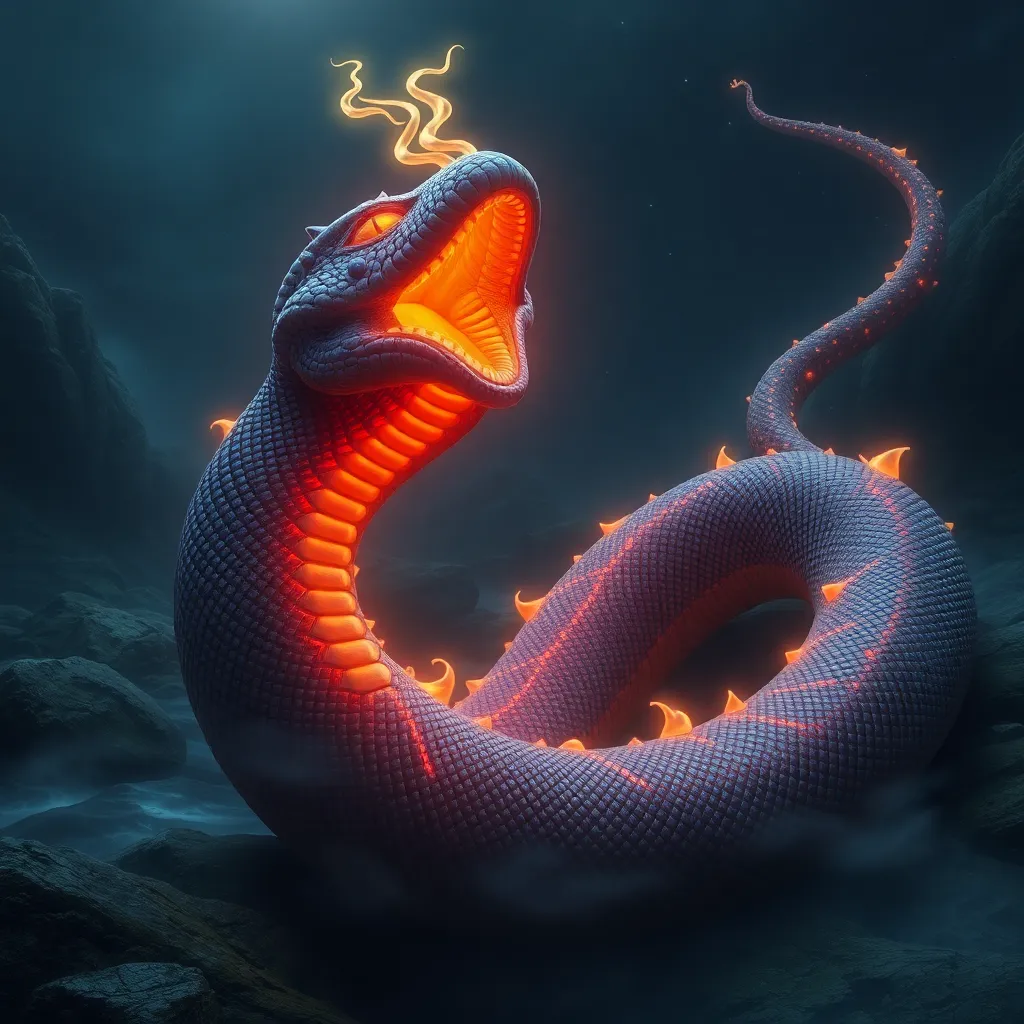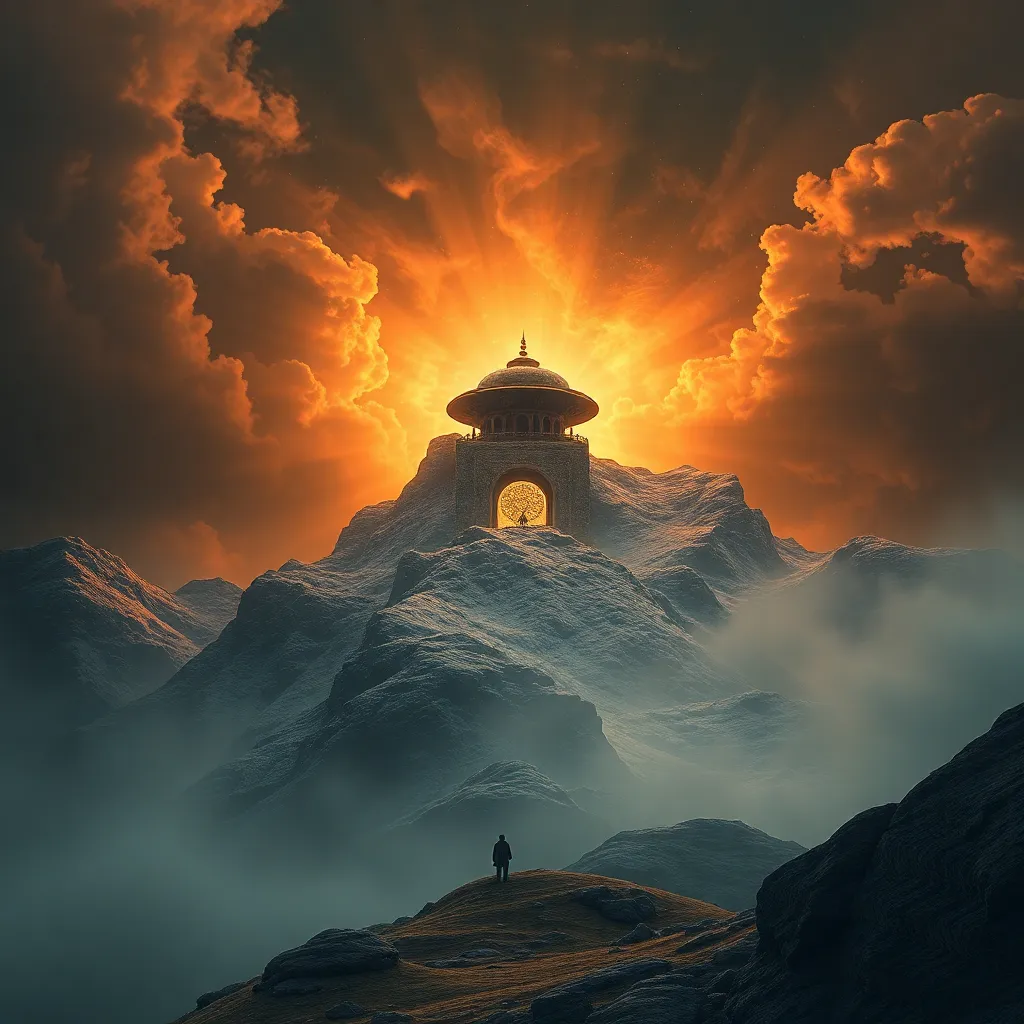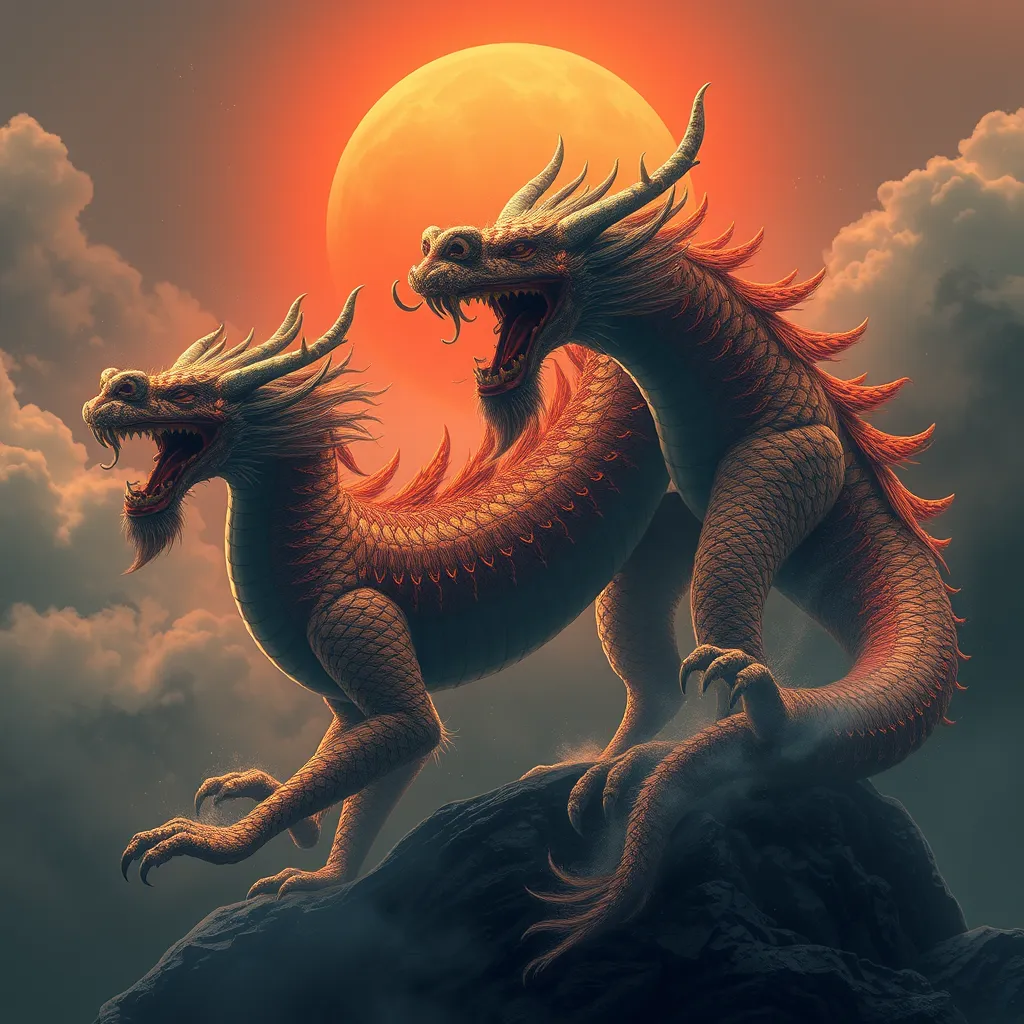Echidna’s Norse Counterpart: Exploring the Parallels Between the Serpent-Woman and Jormungandr
I. Introduction
Mythology has always been a source of fascination, with ancient tales shaping our understanding of the world around us. In Greek mythology, Echidna stands out as a formidable figure, often referred to as the “Mother of Monsters.” On the other hand, Norse mythology introduces us to Jormungandr, the Midgard Serpent, a creature entwined in the cataclysmic events of Ragnarok. This article aims to explore the striking parallels between these two mythological figures, highlighting their origins, symbolism, and the roles they play in their respective mythologies.
II. Mythological Context of Echidna
A. Origins and family lineage
Echidna’s lineage roots back to the primordial sea deities Phorcys and Ceto, who symbolize the dangers of the ocean and the unknown. As the progeny of these two ancient beings, Echidna embodies a blend of chaos and creation in Greek mythology.
1. Parentage: Phorcys and Ceto
Phorcys and Ceto, often associated with the dangers and monstrosities of the sea, birthed Echidna, who carries their legacy in her essence. Her parentage situates her firmly within a tradition of monstrous beings that challenge the order established by the gods.
2. Role in Greek mythology
Echidna is often depicted as a guardian of the monstrous offspring she bears, playing a significant role in the trials faced by Greek heroes, such as Heracles, who must confront her children in their quests.
B. Characteristics and symbolism
1. Representation as the “Mother of Monsters”
Echidna is famously known as the “Mother of Monsters,” a title that signifies her role in the creation of numerous legendary creatures, including the Chimera, the Nemean Lion, and the Hydra. This maternal aspect emphasizes her dual nature as both a creator and a destroyer.
2. Significance of her serpent form
Her portrayal as a serpent-woman accentuates her connection to chaos and the primal forces of nature. This symbolism links her to fertility and danger, embodying the thin line between nurturing life and unleashing destruction.
III. Mythological Context of Jormungandr
A. Origins and family lineage
Jormungandr, also known as the Midgard Serpent, is the offspring of Loki, the trickster god, and Angerboda, a giantess. His birth signifies a union of chaos and power that permeates Norse mythology.
1. Parentage: Loki and Angerboda
Loki, notorious for his mischief, and Angerboda, a figure associated with the giants, give rise to Jormungandr, who becomes a significant player in the Norse cosmology.
2. Role in Norse mythology
Jormungandr is often depicted as encircling the Earth, representing the boundaries of Midgard. His existence symbolizes the constant tension between order (gods) and chaos (giants).
B. Characteristics and symbolism
1. The Midgard Serpent and its significance
As the Midgard Serpent, Jormungandr embodies the idea of balance in the cosmos. His immense size and strength reflect the power of nature, while his encircling form suggests a protective yet threatening presence.
2. Associations with chaos and the end of the world
Jormungandr’s role in Ragnarok, the prophesied end of the world, highlights his association with chaos. He is fated to engage in a cataclysmic battle with Thor, which symbolizes the inevitable clash between order and chaos.
IV. Role in Mythology: Creators of Chaos
A. Echidna’s monsters and their impact on Greek heroes
Echidna’s offspring wreak havoc across the Greek landscape, serving as formidable challenges for heroes who seek glory. Each monster tells a story of struggle and conquest.
1. Notable offspring and their stories
- Chimera: A fire-breathing creature with a lion’s head, a goat’s body, and a serpent’s tail.
- Nemean Lion: An invincible lion whose skin became a symbol of Heracles’ strength.
- Hydra: A multi-headed serpent that grew two heads for each one cut off, representing regeneration.
2. The challenges they posed to civilization
The monsters born of Echidna often represent humanity’s struggles against nature and the unknown. They embody the fears and challenges that heroes must confront to establish order.
B. Jormungandr’s role in Ragnarok
Jormungandr’s ultimate confrontation with Thor during Ragnarok signifies a climactic battle between gods and giants, where chaos reigns supreme. This event marks the end of the world as it is known.
1. Prophesied battles and the ultimate confrontation with Thor
It is foretold that Jormungandr will rise from the ocean, unleashing a torrent of destruction as he faces Thor, resulting in mutual destruction.
2. Symbolism of destruction and renewal
The battle between Thor and Jormungandr symbolizes the cyclical nature of existence, where destruction paves the way for renewal and rebirth in the Norse worldview.
V. Thematic Parallels: Motherhood and Power
A. Exploration of motherhood in both myths
1. Echidna as the nurturing figure of monsters
Echidna nurtures her monstrous offspring, symbolizing the complexity of motherhood, where nurturing can lead to chaos and destruction.
2. Jormungandr’s role in the cycle of life and death
In contrast, Jormungandr’s existence represents the cyclical nature of life and death, as his role in Ragnarok signifies both an end and a new beginning.
B. The power dynamics in their respective narratives
1. Influence over heroes and gods
Both Echidna and Jormungandr exert significant influence over their respective worlds. Echidna’s monsters challenge heroes, while Jormungandr’s presence dictates the fate of gods during Ragnarok.
2. The ambivalence of their portrayals as both creators and destroyers
Both figures embody duality—Echidna as a nurturing mother and a source of chaos, and Jormungandr as a protector and destroyer, reflecting the complexities of nature.
VI. Cultural Interpretations and Legacy
A. How Echidna has been interpreted in modern culture
1. Literature, film, and art references
Echidna’s legacy persists in modern literature and media, where she often appears as a symbol of monstrous femininity, embodying both allure and danger. Her character has inspired various adaptations in books, films, and artworks, reflecting contemporary fascinations with mythology.
B. The legacy of Jormungandr in contemporary media
1. Influence on popular culture and representation in modern narratives
Jormungandr has influenced countless modern narratives, from graphic novels to films and video games, often depicted as a powerful force of nature, symbolizing chaos and the inevitability of fate.
VII. Comparative Analysis: East Meets West
A. Similarities in narratives and character traits
1. The archetype of the monstrous mother
Both Echidna and Jormungandr serve as archetypical figures representing the duality of creation and destruction, motherhood and chaos. Their stories illustrate the universal themes found in mythologies across cultures, showcasing the human experience’s complexities.




